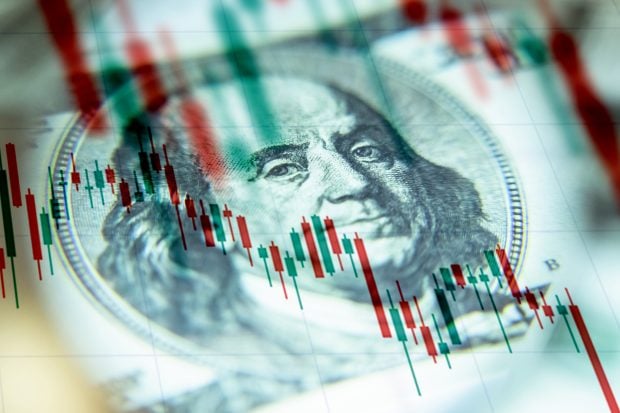An unprecedented seven-year streak of annual U.S. auto salesgrowth finally came to an end, yet carmakers and their investorsaren’t fazed.
|Automakers capped their first year of shrinking industrywidedeliveries since the recession with Wall Street bidding up theirshares. Plenty of signs point to another healthy -- albeitsoftening -- U.S. market in 2018.
|Here are some of the reasons why -- falling sales and all --carmakers aren’t sounding alarm bells just yet.
Trucks on Top
While total light-vehicle sales slipped in 2017, severalautomakers curbed lower-margin deliveries of car models to rentalcompanies that tend to be heavily discounted.
|Meanwhile, lucrative full-size pickups remained the top-sellingmodels last year as Detroit automakers continue to cultivate loyalcustomers. Ford Motor Co.’s F-Series was the top-selling vehicleline in America for the 36th consecutive year. With each truckselling at an average price of $47,800, Ford and its pickup-heavypeers are raking in profit even as car sales slump.
|“This year, it’ll be an even bigger year for trucks, becausethere are new ones coming,” Michelle Krebs, an analyst withcar-shopping website Autotrader, said on Bloomberg Television. “Weknow that Fiat Chrysler will be introducing a new Ram this year.General Motors has a couple of new full-size pickup trucks and Fordwill have some additions to the F-Series. So, it’s going to be theyear of the truck.”
SUV Spending
Trucks aren’t the only money makers flying off dealer lots.American families are increasingly trading in their sedans for thenew chosen family hauler -- crossover sport utility vehicles. SUVsthat are built like cars provide the storage and higher seatingposition of their truck-based brethren, but more sedan-likehandling and fuel economy. They also sell at higher price points,meaning more good news for companies’ bottom lines.
|Toyota Motor Corp.’s Camry sedan -- a plain-vanilla icon thatextended its reign as the top-selling car to 16 straight years --was surpassed by the Japanese automaker’s RAV4 crossover last yearfor the first time. Light trucks, which include both pickups andSUVs, accounted for 63% of the market, up from 59.5% in 2016,according to Autodata.
|“If you don’t call 2017 the death of the car, you can call 2018the death of the car,” Mark Wakefield, head of the automotivepractice at consultant AlixPartners, said in an interview. “Everyyear, there’s a chop that comes out of that market.”
Luxury Living Large
While the U.S. auto market is projected to shrink again in2018 by about half a million vehicles, luxury-vehicle sales mayhold their own or even grow a little.
|“We anticipate the luxury market will be flat or slightly up,”Scott Keogh, Audi’s U.S. chief executive officer, said on aconference call. Growth of 1% or 2% is possible in part because taxcuts have bolstered consumer confidence and boosted the stockmarket, he said.
|Many high earners will see lower U.S. tax rates, but eliminatingthe deduction for state and local taxes could stunt demand in somekey luxury-vehicle markets, such as New York and California, saidJoe Eberhardt, CEO of Jaguar Land Rover North America.
|“Clearly there’s a positive impact on the corporate side as itrelates to individuals and to our core target audience,” he said.“Depending on which states you are based and live in, it may be atax increase as opposed to relief, so too soon to tell” what thatmeans for net luxury sales, he said.
Friendly Financing
The Federal Reserve raised interest rates last year and plans todo so again in 2018, likely crimping car sales on the margins.Still, lending rates remain at low levels compared with 2000 and2001, the only other period that annual U.S. sales topped 17million, according to Ivan Drury, senior analyst with car-shoppingwebsite Edmunds.
|“Banks have a lot of funding available right now for consumers,”Judy Wheeler, Nissan’s vice president for U.S. sales, said in aphone interview. “It will be easy to get funding if consumers wantto purchase.”
|AlixPartners estimates the average car payment is $460 a monthnow and would rise to $560 by year end if interest rates rise by 1point over the year, Wakefield said. Automakers may have theability to counteract that with more incentives.
|“It does come straight out of profit,” Wakefield said. “Thealternative is to let someone else take it and take thatshare.”
Inventory Management
Automakers are also coming into 2018 with fewer concerns aboutinventory. A year ago, there were record numbers of cars and truckson dealers’ lots and companies were facing tough choices betweenproduction cuts and heavy discounting.
|Now, it’s more manageable -- closer to a 70-day supply ofvehicles -- and two-thirds of them are light trucks, in line withconsumer preferences, said Brandon Mason, automotive director andU.S. mobility leader for PwC.
|“The only thing that really brought that down was the recoveryvolume from Harvey and Irma,” he said, referring to the hurricanesthat struck Texas and Florida in 2017, damaging as many as amillion vehicles.
|Copyright 2018 Bloomberg. All rightsreserved. This material may not be published, broadcast, rewritten,or redistributed.
Complete your profile to continue reading and get FREE access to CUTimes.com, part of your ALM digital membership.
Your access to unlimited CUTimes.com content isn’t changing.
Once you are an ALM digital member, you’ll receive:
- Critical CUTimes.com information including comprehensive product and service provider listings via the Marketplace Directory, CU Careers, resources from industry leaders, webcasts, and breaking news, analysis and more with our informative Newsletters.
- Exclusive discounts on ALM and CU Times events.
- Access to other award-winning ALM websites including Law.com and GlobeSt.com.
Already have an account? Sign In
© 2024 ALM Global, LLC, All Rights Reserved. Request academic re-use from www.copyright.com. All other uses, submit a request to [email protected]. For more information visit Asset & Logo Licensing.









